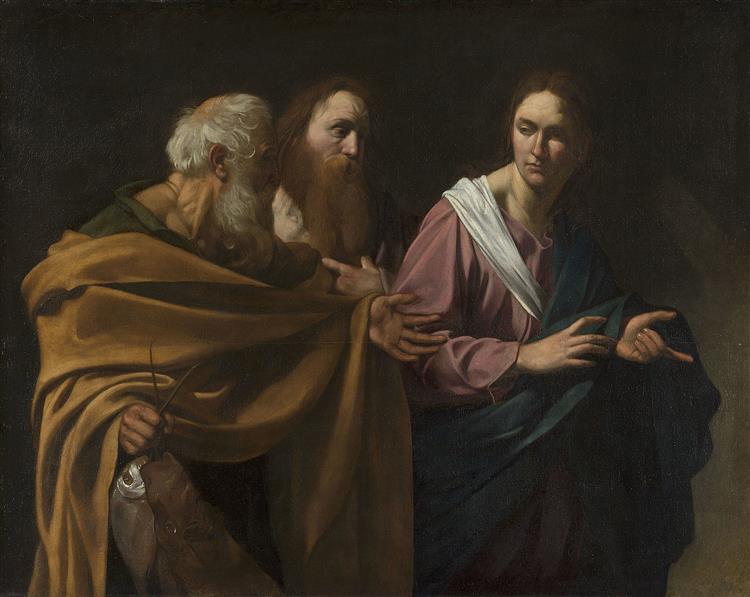Descrizione
Caravaggio's The Calling of Saints Peter and Andrew (1606) is a magnificent example of his unique style and innovative technique, placing it as a fundamental piece within the history of Baroque art. This painting illustrates the moment when Jesus Christ calls his first disciples, Peter and Andrew, while they are in an atmosphere of daily work, which underlines Caravaggio's humanistic and earthly approach in the representation of religious themes.
The composition of the work is remarkably dramatic, following Caravaggio's tendency to use chiaroscuro to create an atmosphere of intense emotion. At the centre of the work, Christ is placed in an almost classical position, with his figure illuminated by a golden light that highlights his divinity. The contrast between the light emanating from him and the shadows in which Peter and Andrew are found establishes a visual dialogue that captures the viewer's attention. Caravaggio uses light not only as a tool to give life to his figures, but also to symbolise a sacred moment, a call that transforms.
The characters in the painting are presented with palpable humanity. St. Peter, on the left, is depicted as a robust man with an attentive expression, with a look of surprise that suggests the wonder of his divine encounter. Andrew, on the opposite side, seems to be in a state of indecision, which adds an emotional charge to the scene. His dark clothing contrasts with the luminosity of Christ, underlining his secondary role in this divine summons.
The use of color in this work is particularly significant. Caravaggio employs an earthy color palette that echoes the everyday life of fishermen, while accents in more vibrant hues—such as the golden yellow of the light and the red of Christ’s cloak—act as focal points that direct the gaze and emphasize the importance of the moment depicted. This duality between the mundane and the divine is a constant in Caravaggio’s work, as he seeks to draw the viewer into the real lives of the saints and their spiritual experiences.
An interesting aspect of The Calling of Saints Peter and Andrew is its contextualization within the time in which Caravaggio lived. In the transition between the Renaissance and the Baroque, the artist stands as a bridge that fuses the elegance and proportion of the Renaissance with the immediacy and realism of the Baroque. This work not only reflects his technical mastery, but also his focus on the psychology of the characters and the narrative that surrounds them, a significant development that would influence generations of later artists.
In his depiction of simultaneous humility and grandeur, Caravaggio invites us to look beyond the religious content of the work and reflect on the impact of the human experience on the divine. His ability to achieve this emotional connection is what characterizes his work and has made him a central figure in Western painting. Thus, "The Calling of Saints Peter and Andrew" stands as a testament not only to his artistic prowess, but to his profound understanding of human nature and its relationship to the sacred.
KUADROS ©, a famous painting on your wall.
Hand-made oil painting reproductions, with the quality of professional artists and the distinctive seal of KUADROS ©.
Painting reproduction service with satisfaction guarantee. If you are not completely satisfied with the replica of your painting, we will refund 100% of your money.

